Instantly recognizable, Westminster Abbey – or, more correctly, the Collegiate Church of St Peter in Westminster - is one of the greatest churches in the world, and one of its most ancient. If you should visit and find a quiet spot in which to stand and listen, you might catch the whisper of times past, of the centuries of worship, celebration and commemoration that have taken place and continue to take place within its marble walls. For it was here in the year 1245, on what was then known as Thorny Island, that the pious King Henry III began rebuilding the 11th-century Romanesque basilica of St Edward the Confessor, one of the last Anglo-Saxon kings who, until Edward III adopted St George, was also the patron saint of England.
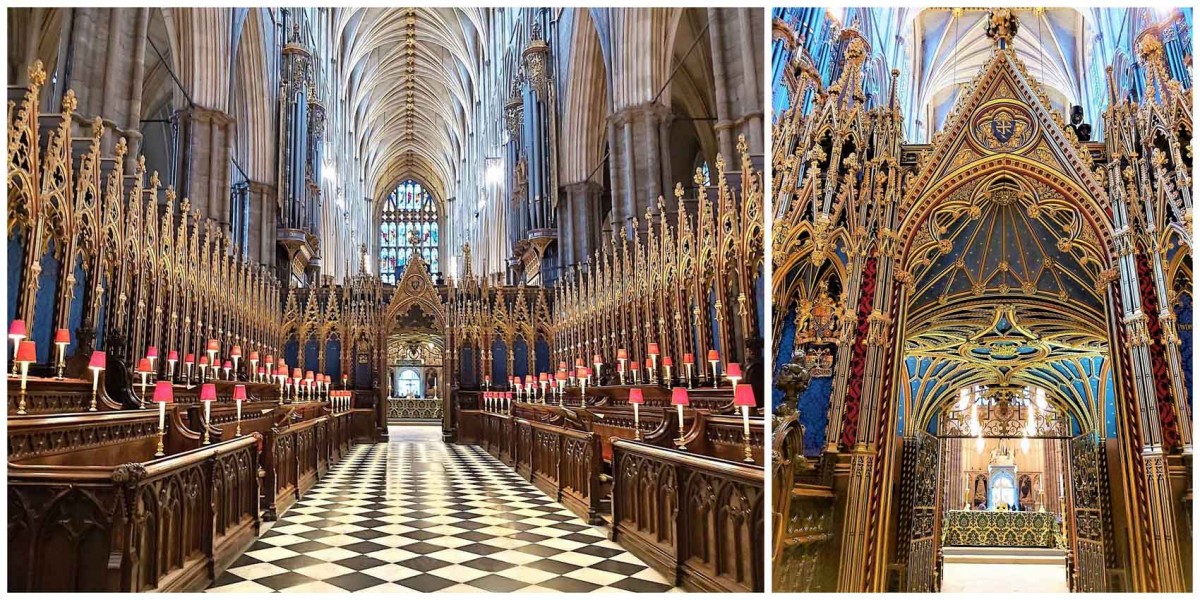
The Choir looking west, and the Organ Screen, looking towards the Great West Door
It was Henry III’s devotion to St Edward the Confessor that led him to place the saint’s tomb, his shrine, at the very heart of his new Gothic abbey, later to be surrounded by the tombs of several Plantagenet kings and queens, among them Edward III and Philippa of Hainault, and Henry III himself. The Chapel of St Edward the Confessor lies immediately behind the high altar in front of which, occupying the floor of the Chancel, is the superb Cosmati Pavement, just one of the abbey’s myriad treasures. Thought to have been a papal gift to the abbey in 1269, the pavement of over 30,000 pieces of coloured onyx, glass and porphyry, is said to contain in its elaborate pattern a ‘symbolic expression of the age of the world.’
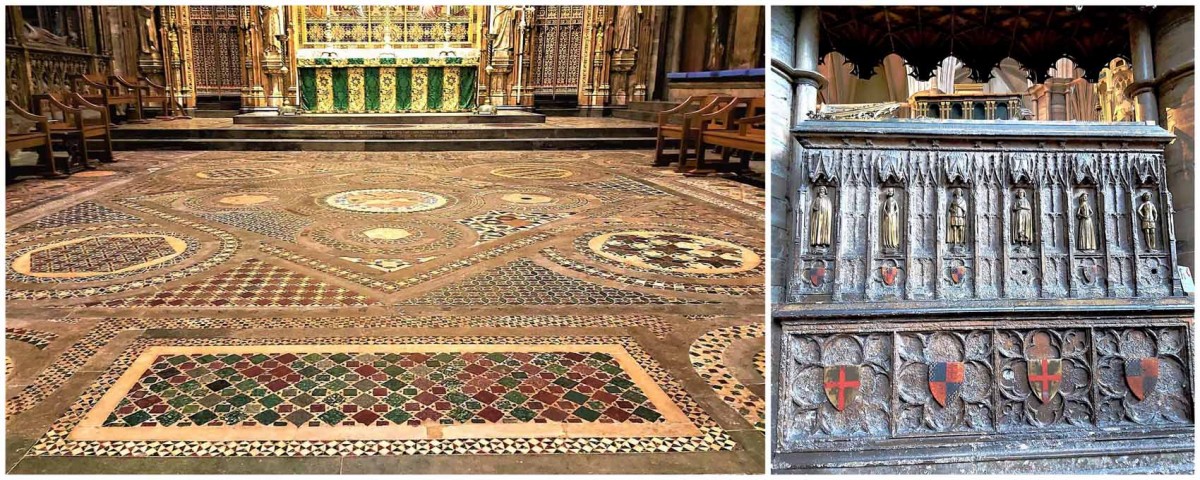
The Cosmati Pavement, and the tomb of King Edward III
For a thousand years, Westminster Abbey has encapsulated England’s history.
For a thousand years, Westminster Abbey has encapsulated England’s history. Behind the Confessor’s shrine lies the tomb of Henry V of Agincourt fame and beyond his chantry chapel is another, this time Henry VII’s Lady Chapel with its magnificent fan-vaulted ceiling. It is here that Henry VII and his queen, Elizabeth of York, lie entombed. The last great masterpiece of English medieval architecture, it was described by the Tudor historian, John Leland, as ‘The wonder of the entire world.’
Nearby, on either side of the Lady Chapel, lie two queens, one the last Tudor monarch of England, the other the penultimate Stuart monarch of Scotland. Cousins and political rivals, they were Elizabeth I and Mary, Queen of Scots. There is also a certain irony in that the Protestant Elizabeth lies entombed above her Catholic sister, Mary, ‘Bloody Mary,’ so called for the Protestants she put to death because of their faith. It is almost a case of Elizabeth triumphant.
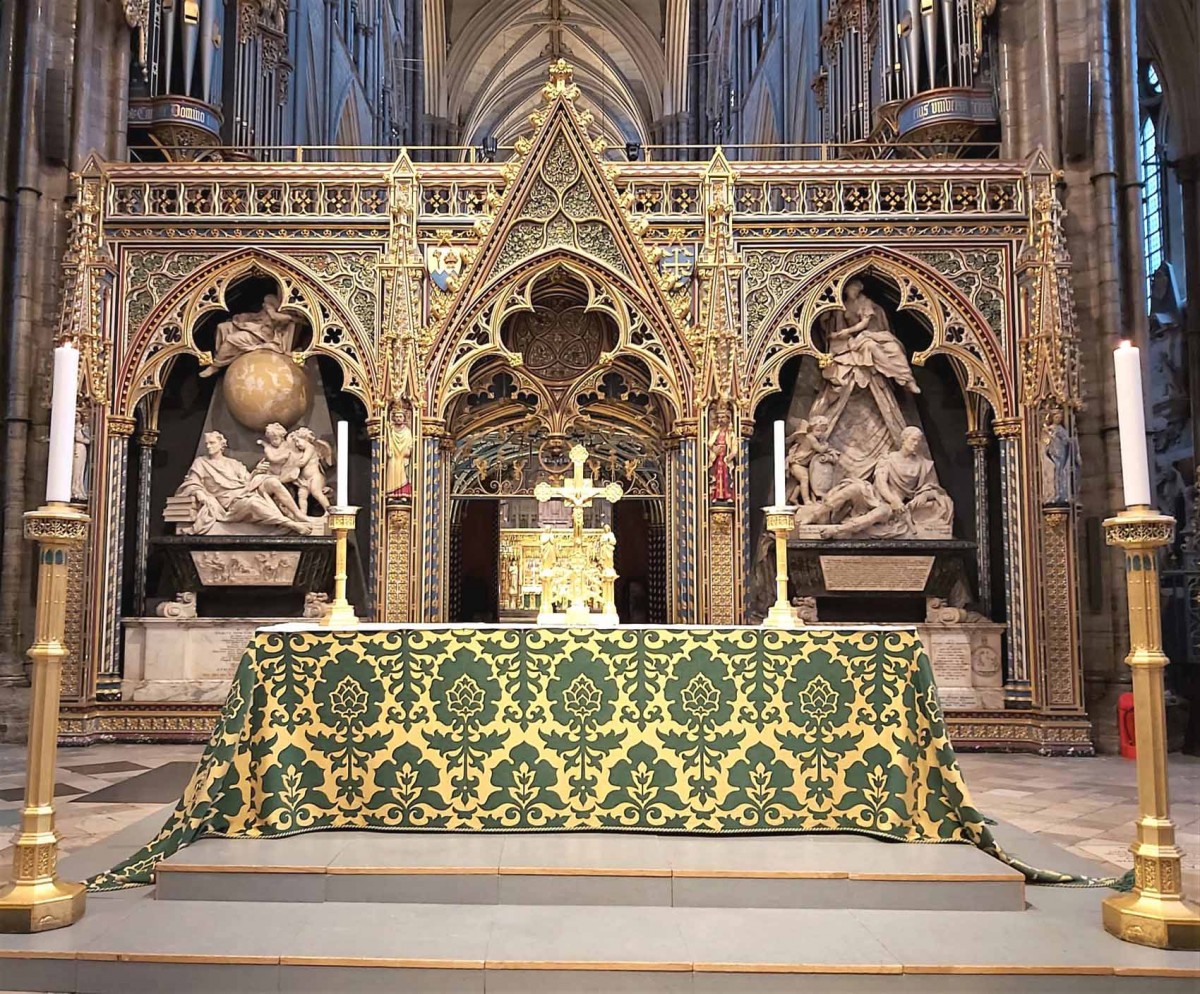
The Organ Screen in the Nave
Despite being a Royal Peculiar, which is to say a church that is subject to the direct jurisdiction of the monarch, and despite the fact that no fewer than thirty-eight coronations, including that of Queen Elizabeth II, have been celebrated before the High Altar – where, since 1919, ten royal marriages have also been solemnized and the ceremonial funerals of Diana, Princess of Wales and Queen Elizabeth The Queen Mother observed – Westminster Abbey is not associated with royalty alone. It also commemorates the lives, careers and achievements of statesmen and politicians, among them Disraeli and Gladstone, diplomats, churchmen, philanthropists such as Baroness (Angela) Burdett-Coutts and Elizabeth Warren, military figures, scientists, artists, writers and musicians.
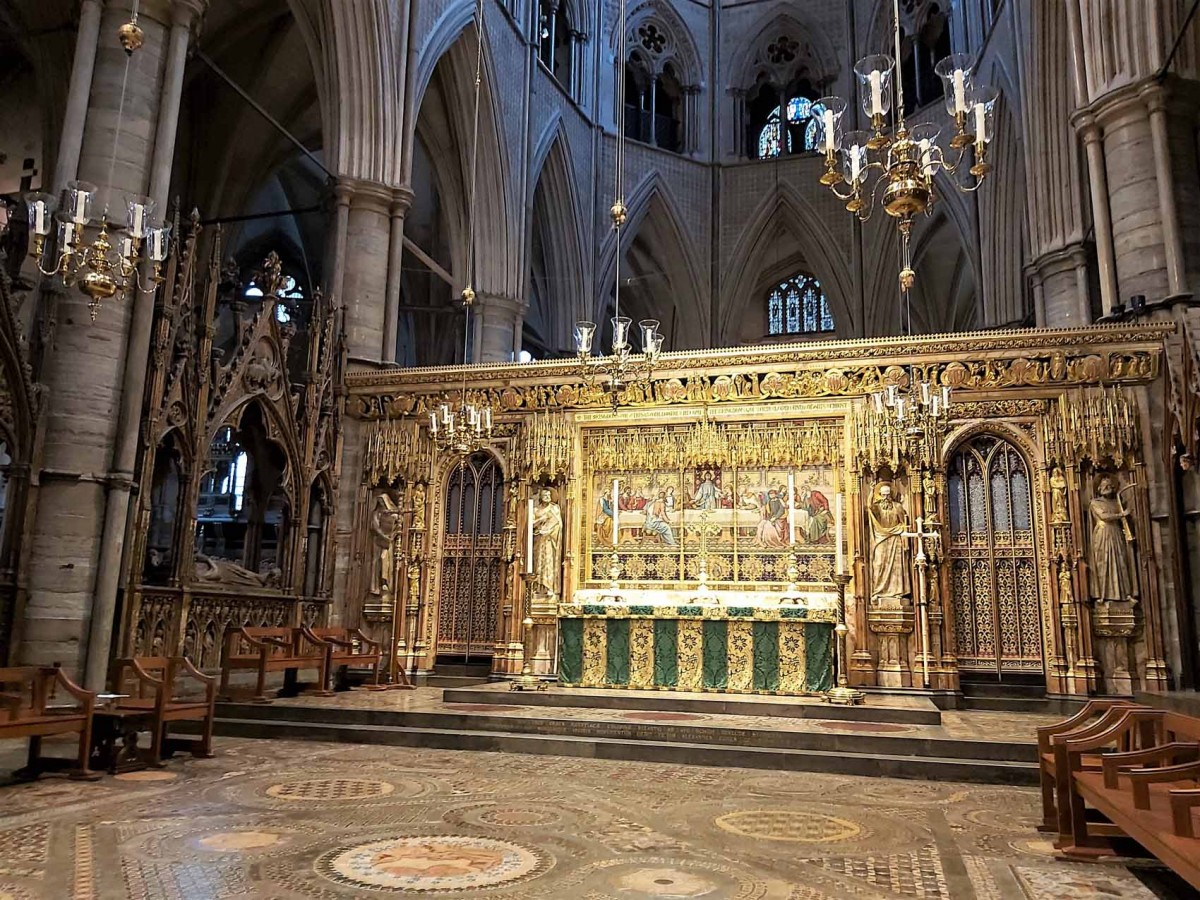
The High Altar
In Poets’ Corner on the abbey’s south side, though not all are actually buried there, illustrious names jump out at us. Among them from the world of literature are Chaucer and Shakespeare, Christopher Marlowe, Byron, Dickens and Kipling, the Bronte Sisters, Jane Austen, Wilde, Auden, the First World War poets, Henry James, Lewis Carroll and John Betjeman. There are memorials too dedicated to distinguished figures from the performing arts, among whom are included Henry Irving and David Garrick, Laurence Olivier, Peggy Ashcroft, and the Founders of the Royal Ballet, de Valois, Ashton, Lambert and Fonteyn.
On the west side of the ornate organ screen, which separates the Choir - the heart of worship since medieval times - from the Nave, the most recent abbey internment was that of the theoretical physicist Stephen Hawking. His ashes were laid to rest between Sir Isaac Newton and Charles Darwin in 2018. While Westminster Abbey speaks to us of the nation’s great and the good, it also reminds us that among all those celebrated for the positions they held and the mark they made during their lifetimes, the brave, too, are remembered. Just inside the Great West Door lies the Tomb of the Unknown Warrior. A British soldier brought to London from France in November 1920, not long after the end of the First World War, he was laid to rest in the presence of his king, in a grave filled with French soil. It was and remains a symbol of all those who had no identity and no known grave.
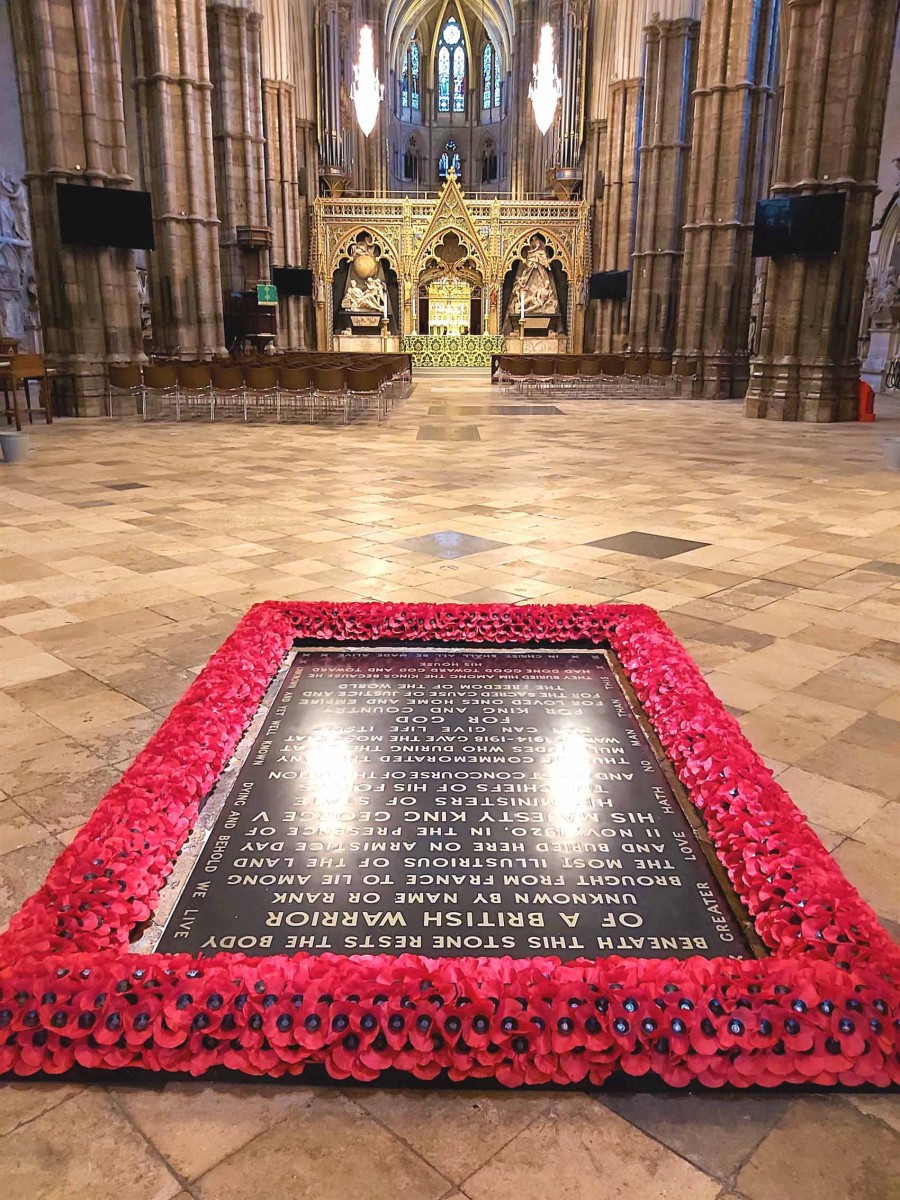
Tomb of the Unknown Warrior
As you leave the abbey through the West Front, remember to turn and look up. Beneath Hawksmoor’s famous twin towers, the statues of ten 20th-century martyrs have, since 1998, occupied the medieval niches above the Great West Door. Among them are Martin Luther King, Queen Victoria’s granddaughter, Grand Duchess Elisabeth Feodorovna – or St Elisabeth Romanova – of Russia, Oscar Romero and Maximilian Kolbe.
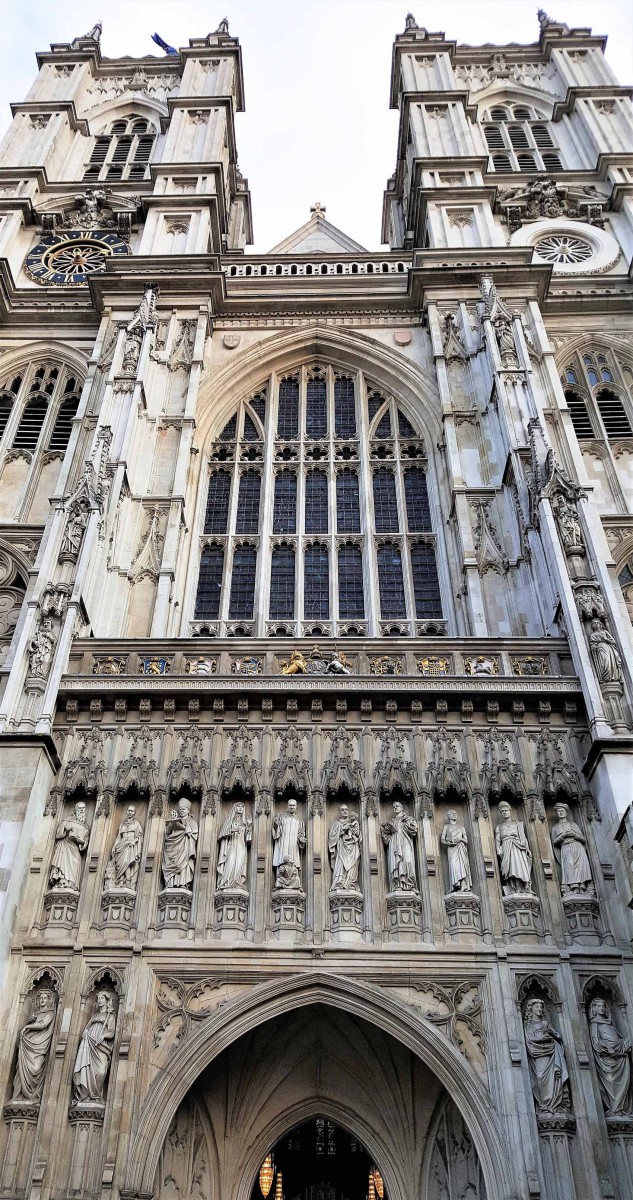
Hawksmoor's Twin Towers and the statues of 20th century martyrs above the Great West Door
Westminster Abbey is a religious and architectural treasure house that has evolved over the centuries. From the far distant days when the waters of the river Tyburn – still there but now deep underground - lapped the banks of Thorny Island, to the present day, it represents the story of England. Be still and listen…


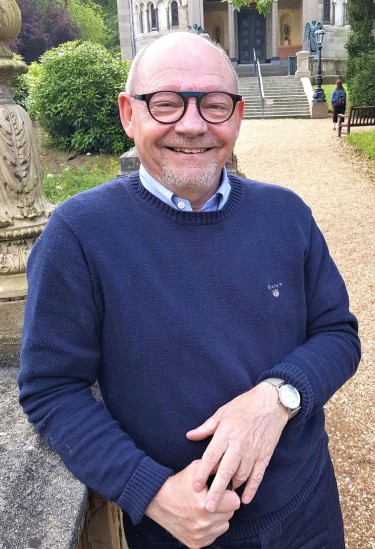
540+k followers
152+k followers